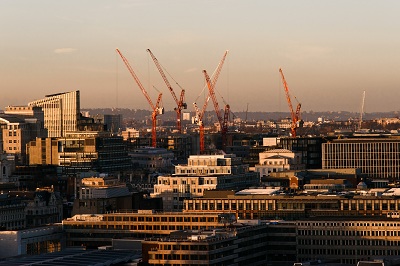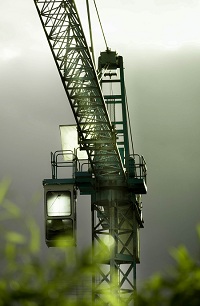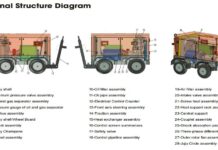Module construction has been around for decades but has largely been ignored for the past 70 years. Despite sector recognition that modular construction methods save time, money, and resources, there is a fixed mindset that modular is less desirable than traditional modes of construction. While attitudes are rapidly changing in the commercial sector, industries remain stubbornly immune to the commonly accepted truth that modular is an improved form of construction. The NHS and educational planners have come around to the successes of modular construction, and for a good reason.
Here we offer a guide on module building methodology, exploring the benefits over traditional methods.
What is module construction?
A module is designed and constructed in a factory setting. A streamlined construction process makes the best use of resources and labour while being built indoors. The module moves along a construction line, and each subcontractor plays its part at the appropriate time.
At the same time as the module is being constructed at the factory, the groundworks are being completed on site. As soon as the groundworks are complete, the modules will be ready for delivery, and only the second fix remains before the building is ready to be handed over to the client.

How does this module building methodology differ from traditional methods?
Both methods of building start with on-site preparation. This preparation is similar for both construction methods and is essentially a laying of the foundations. However, at this point, the modular and traditional methods walk different paths.
Traditional construction practices would move on to framing the property. After the framing, there would be the roofing, siding, and insulation, followed by the fitting of the doors, windows and mechanical fix. Once this is done, the interior and exterior finishes will be applied. All these steps would be dictated by the weather and by the availability of subcontractor specialisms.
When traditional construction is framing up, the completed modules will be delivered to the site. Once installed on-site, only the second fix and some interior detailing are left to complete before handover to the end user. The module is constructed indoors by an established team of skilled professionals, so any risk of delay is almost completely negated.
Why is modular building commonly accepted as superior?
 There are lots of reasons why module building is superior. The first is the timing. As the sub- and superstructures are completed simultaneously, the build time is reduced almost by half. Not only does modular offer accelerated production methods, but there is little chance of delay due to weather conditions or contractor shortages. Any potential problems with the supply chain are also mitigated, as the factory comes stocked with the parts required.
There are lots of reasons why module building is superior. The first is the timing. As the sub- and superstructures are completed simultaneously, the build time is reduced almost by half. Not only does modular offer accelerated production methods, but there is little chance of delay due to weather conditions or contractor shortages. Any potential problems with the supply chain are also mitigated, as the factory comes stocked with the parts required.
The stocking of supplies in the factory also serves to save money and save resources. There will be less wastage in a modular build. On a traditional construction site, the project manager will over-order supplies as a contingency. There may be a hundred more bricks than required or a dozen more roof tiles and the like. Over the whole of a project, this contingency of supplies adds up, and the supplies are often discarded. The supplies are used for the next project in a factory, and only those used are billed.
Financially speaking, the modular building methods are also better because of the savings in labour costs. There is no need to tender for different subcontractors and face being let down. There is a team of workers who call the factory their permanent workplace.
Quicker, cheaper – and with guaranteed quality
When someone tells you that a method is quicker and cheaper, you automatically think this means they are of a lesser standard. In some ways, modular builders have been a victim of success in offering financially affordable projects delivered in a timely way.
The truth about quality couldn’t be further from perceptions.
Quality assurance in a factory setting is much easier to guarantee. The processes are repeated and refined, but they are easy to check and redo if necessary. Added to this, the materials being used are not adversely impacted by weather conditions during the build. There is no wear and tear to the components before the building has even been constructed when it is built indoors.
Helping to save the environment
There are three reasons why modular is the future if we want to save our environment. First, there is less waste during construction. Second, the modules are recyclable and can be deconstructed and components reused in the future. It is also possible to move the modules to a new site. Third, the air permeation standards in a module building mean that heat is retained better in the unit, and it takes less energy to maintain the right temperature. Finally, but probably of the greatest consequence, the modular building is better for the environment.
Yes, but…
Traditional construction may feel like the right option because it is what we have always done. When it comes to our buildings, we want the best and the sturdy construction of bricks and mortar feels right.
However, all the evidence and opinion suggest that a switch to modular building is better on many levels. It is cheaper, faster, and of high quality. It saves the wastage of resources and offers increased energy efficiency.
But what about the design?
The look of hospitals and schools will always be a defining factor in what we opt for in the construction process. We equate the module building with the hut from school or the temporary prefab building at a hospital. The truth of module building design couldn’t be further from this archaic image we hold in our minds.
Within modular building companies are designers and engineers committed to building the most effective spaces that are the most aesthetically powerful. Module builders are not just about function; there is a culture within the sector towards form and function. New modular builds look modern, clean and, dare we say, beautiful.
And, so…
Modular building in construction is the cake and eat method of building. You can have everything you wish for at a lower price to your pocket and to the planet.





























